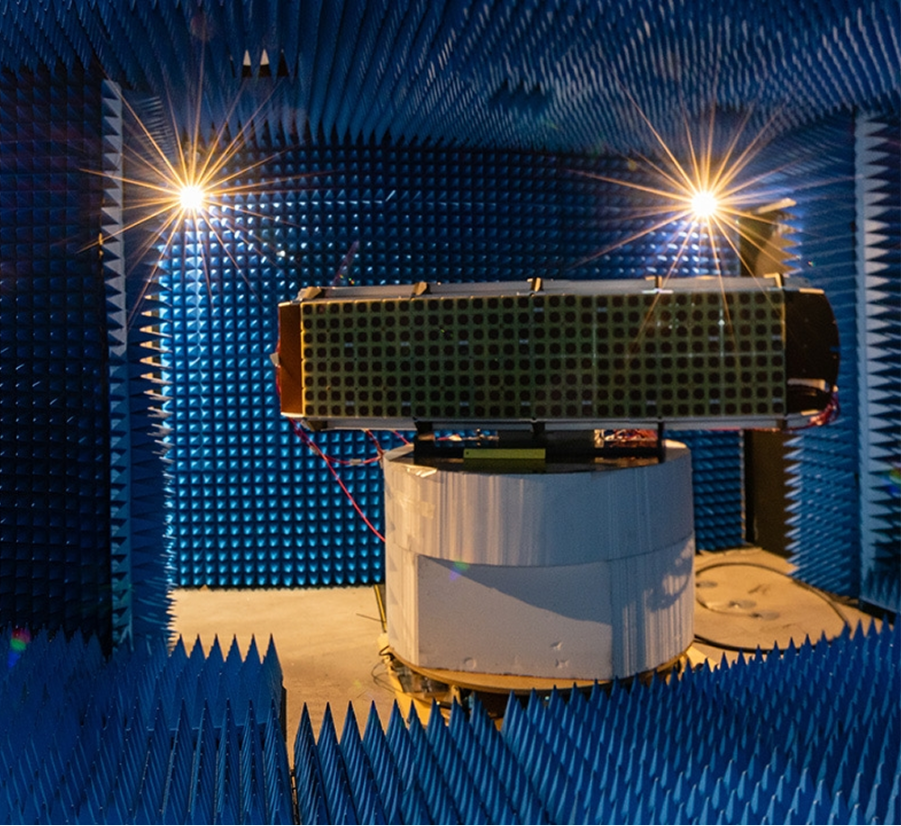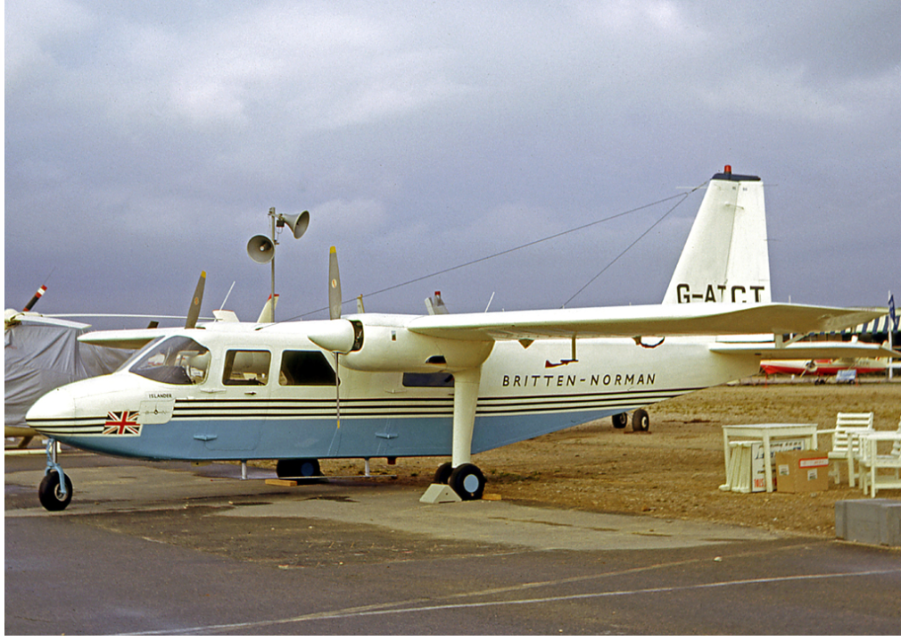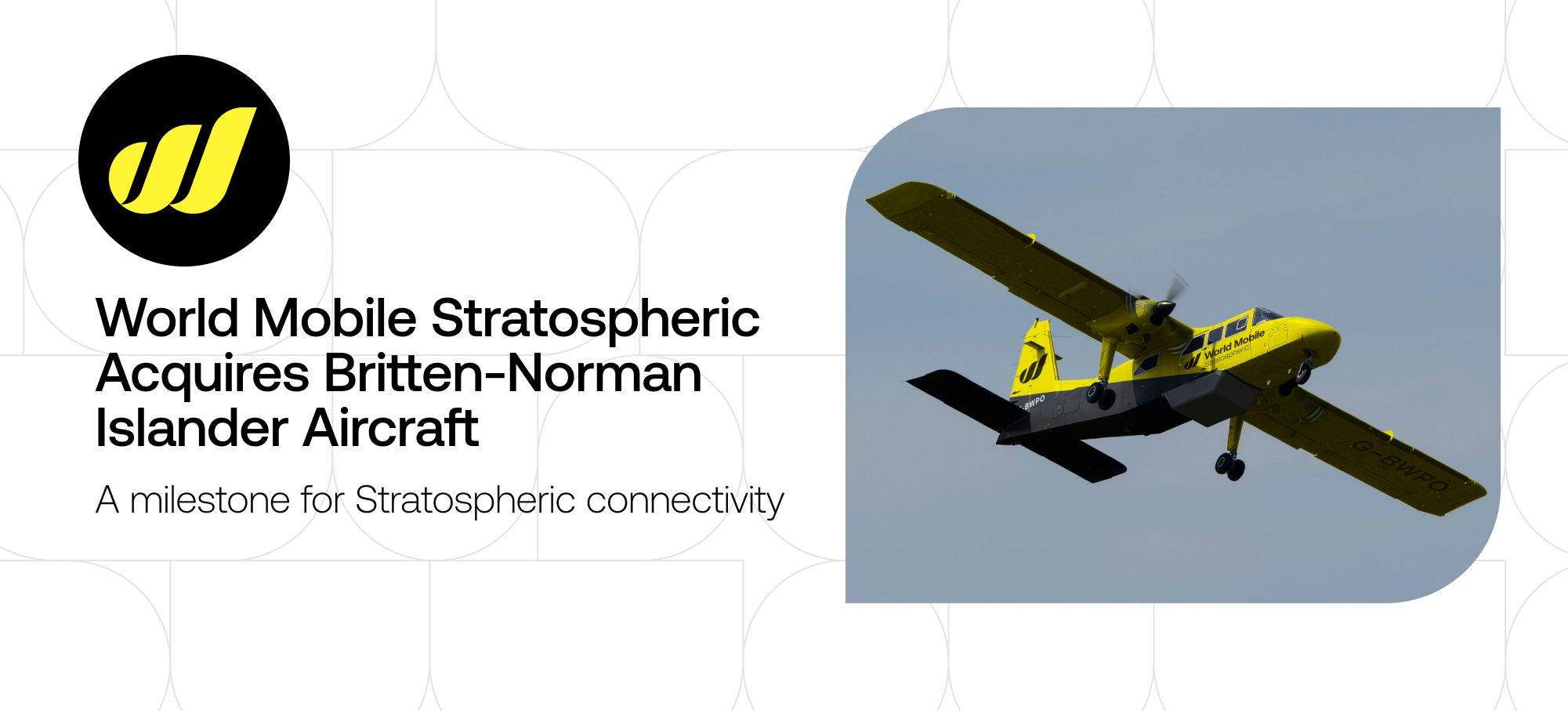World Mobile Stratospheric, a joint venture between World Mobile and Indonesia’s leading digital infrastructure company Protelindo, has acquired a BN2T-4S Islander aircraft as part of a new collaboration with Britten-Norman. The collaboration advances World Mobile Stratospheric’s mission to extend next-generation connectivity from the skies.
The Islander will support the continued development and testing of its proprietary phased-array antenna, a central part of World Mobile Stratospheric’s development, capable of broadcasting hundreds of precision-controlled beams across 15,000 sq. km directly to mobile devices.
The acquisition of this aircraft marks a key operational step in the World Mobile Stratospheric roadmap to build and validate airborne communication systems that can provide cost-effective mobile coverage to communities worldwide. Upcoming flight tests will be used to refine the antenna’s design, control systems, beam stabilization and 5G network integration ahead of the realization of the first stratospheric flight.
The Engineering Case for Stratospheric Connectivity
Every layer offers a different opportunity for telecommunications. Ground infrastructure provides local capacity. Satellites deliver global reach but at high latency. Between these layers lies the stratosphere, a zone of stable, low-wind conditions suitable for sustained flight and wide-area coverage.
“There’s a narrow band in the stratosphere, between 60,000 and 70,000 feet, where wind conditions are benign. You’re above weather systems. Above jet stream turbulence. And you’re able to serve a very large footprint on the ground.” - Gregory Gottlieb, Head of Aerial Platforms, in an interview on World Mobile Stratospheric.
Aircraft operating in this band can maintain consistent DTD 5G coverage. Because the signal travels a much shorter path than it would to satellites in orbit, latency remains close to terrestrial levels. The stratosphere sits high enough for wide coverage yet low enough to maintain real-time communication with phones on the ground, combining reach with responsiveness in a first for the telecommunications industry.
The Phased-Array Antenna: A Technical Marvel

Meet the hardware that is set to beam connectivity from the skies. World Mobile Stratospheric’s proprietary phased-array antenna is engineered to deliver direct-to-device service across 3G, 4G, 5G, and future 6G standards, shaping coverage for mobile phones on the ground in real time. With 450 individually steerable beams, the production array will draw virtually any coverage pattern, from a single dense urban cluster to a wide rural footprint, and keep those beams stationary on the ground with AI software control as the aircraft moves.
The antenna is purpose-built for low-latency, high-capacity mobile connectivity, offering performance characteristics distinct from satellite systems such as Starlink and AST SpaceMobile. It is built for direct-to-mobile communications, requiring no specialist ground equipment or handset upgrades.
Once fully operational, the World Mobile Stratospheric aircraft, known as the Stratomast, loaded with the full-scale phased-array antenna, will function around nine times more cost-effectively per gigabyte than LEO satellite solutions, like Starlink. With an initial 20 MHz bandwidth and a planned upgrade to 40 MHz, unit costs will drop further, approaching an 18x improvement versus satellite solutions on a per-gigabyte basis.
The acquisition of, and testing with, the Britten-Norman Islander is a crucial step in realizing this goal.
Britten-Norman: A British Powerhouse with Decades of Excellence
Britten-Norman is a UK-based aircraft manufacturer and a global leader in sub-regional aviation, best known for the Islander, a rugged twin-engine Short Takeoff and Landing (STOL) aircraft. The company has produced around 1,300 aircraft, with 97% exported to commercial, government, and military operators worldwide. Operating as an SME on the UK south coast, Britten-Norman provides in-house design, manufacturing, and through-life support, while supporting a global operator network in over 120 countries. With a strong track record in utility, special mission, and regional transport applications, Britten-Norman delivers proven aircraft backed by robust support infrastructure.

Expediting Disaster Response from the Stratosphere
When disasters disrupt infrastructure and upend lives, restoring connectivity becomes the backbone of recovery. During World Mobile’s Operation Connecting the Disconnected after Hurricane Helene, we restored communications rapidly through our terrestrial AirNode network. World Mobile Stratospheric builds on that legacy with an unprecedented airborne layer designed for speed, scale, and stability.
The resultant World Mobile Stratospheric aircraft will establish up to 15,000 square kilometers of connectivity within minutes of arrival, and deliver direct-to-device service during emergencies to affected neighborhoods and essential workers.
What Comes Next
Flight testing with the Islander is scheduled to begin in mid-2026, with operations led by World Mobile Stratospheric and system testing conducted in cooperation with BT at Adastral Park near Ipswich.
In the short term, World Mobile Stratospheric is focused on engineering preparation with the Britten-Norman technical group and specialized partners to adapt the Islander for telecommunications payloads, ensuring precise power management, structural integrity, and safe mounting for the phased-array antenna.
“This collaboration with Britten-Norman brings together world-class British aircraft engineering and World Mobile’s next-generation telecoms innovation. Our goal is to demonstrate how stratospheric communications can bring reliable 5G connectivity to places that need it most. World Mobile Stratospheric will ultimately realise the use of DePIN networks using a sharing economy model from the stratosphere. This first major step provides a crucial milestone along that journey.” - Richard Deakin, CEO of WMS
“We’re proud to work alongside World Mobile Stratospheric to advance airborne connectivity technology. The Islander provides a safe, certified platform for innovative applications like this one, and our teams have the expertise to deliver novel airborne systems with confidence and precision.” - Mark Shipp, Technical Director and Head of Design at Britten-Norman.”
The data gathered and the lessons learnt will shape the next generation of high-altitude aircraft. Moreover, all World Mobile Stratospheric aircraft will integrate seamlessly with the World Mobile network, routing traffic through EarthNodes for transparent, verifiable onchain operation.
The future of telecommunications will navigate the endless skies with razor-sharp precision, identifying and serving coverage gaps and enabling billions to reclaim power over their connectivity. The acquisition of the Islander is the foundation of that next step: a trusted aircraft built to carry the future of mobile connectivity into the air.
Join the movement. Reclaim power over your connectivity.



.png)
